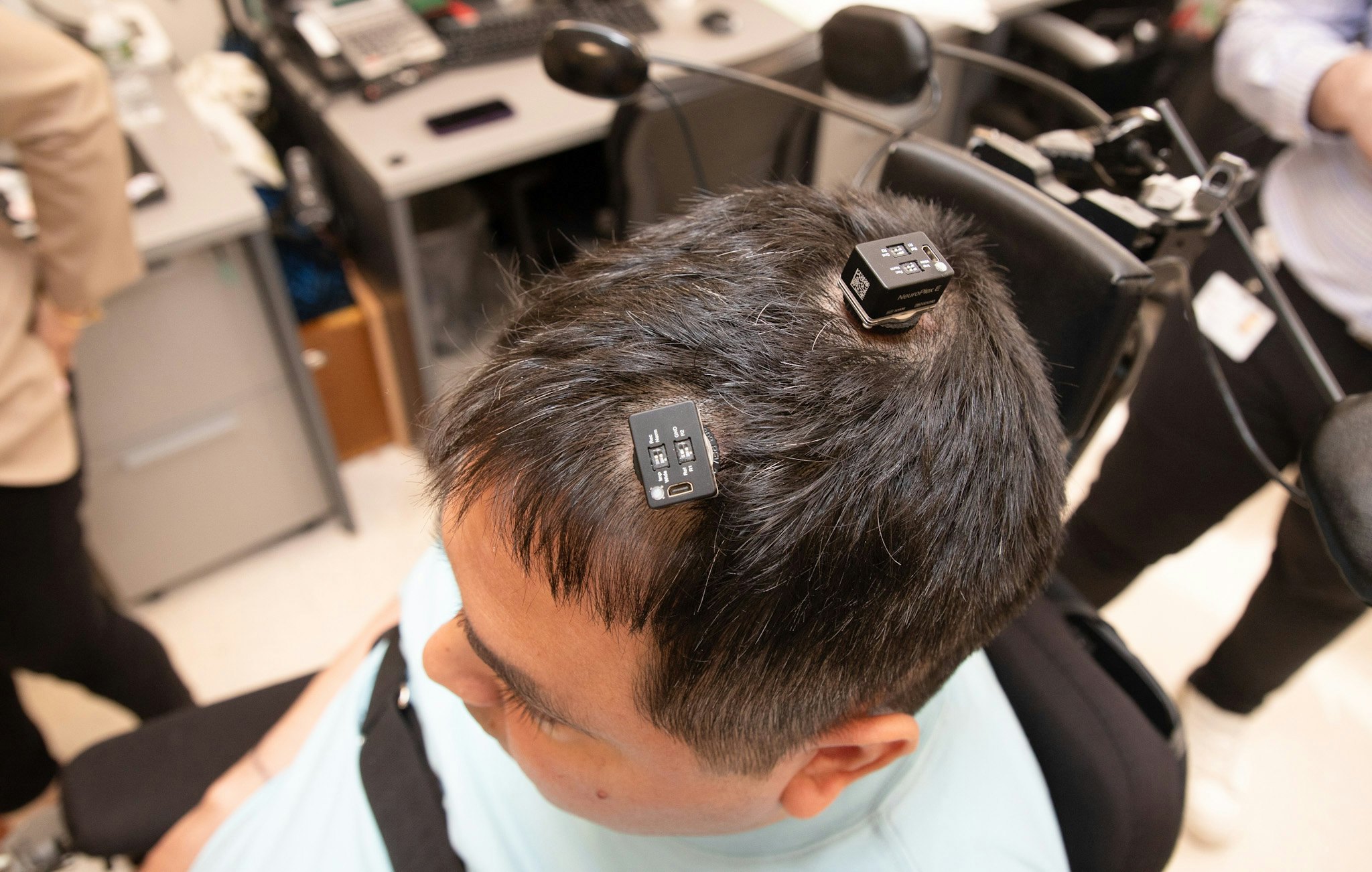
In 2020, Keith Thomas suffered a diving accident that injured his C4 and C5 vertebrae, leaving him paralyzed from the chest down. Three years later, an advanced clinical trial by researchers from Northwell Health’s Feinstein Institutes for Medical Research has restored feeling and movement to Thomas’ right hand.
The trial, led by Chad Bouton, a bioengineer at the Feinstein Institutes, involves a procedure known as a double neural bypass, which Thomas received in 2021.
A double neural bypass connects the brain, spinal cord, and body to establish mobility and tactility. During the 15-hour surgery, Thomas received five AI-enabled electrode arrays in precise regions of his brain, which are in charge of motion and feeling in his right hand. During the surgery, Thomas felt his right fingers for the first time in nearly three years.
“This is the first time the brain, body, and spinal cord have been linked together electronically in a paralyzed human to restore lasting movement and sensation,” said Bouton in a statement last week.
The surgery also entailed the installation of external ports at the top of Thomas’ head. The researchers hook up an AI program to these ports to perform thought-driven therapy, in which the program translates Thomas’ brain activity into actions. The AI registers inputs from Thomas’ brain and then transforms them into signals passed through externally placed electrodes on his arm that stimulate movement. In the months since the surgery, Thomas progressed and was able to move and feel his right wrist and arm, even when the equipment is switched off.
“When the study participant thinks about moving his arm or hand, we ‘supercharge’ his spinal cord and stimulate his brain and muscles to help rebuild connections, provide sensory feedback, and promote recovery,” Bouton explained in the statement.
Four months later, Thomas can feel his sister’s hand in his and even move his arms. This recovery could have permanent gains as his body continues to recover. This new technology, and others like it, could be game-changers for people living with spinal cord injuries.







